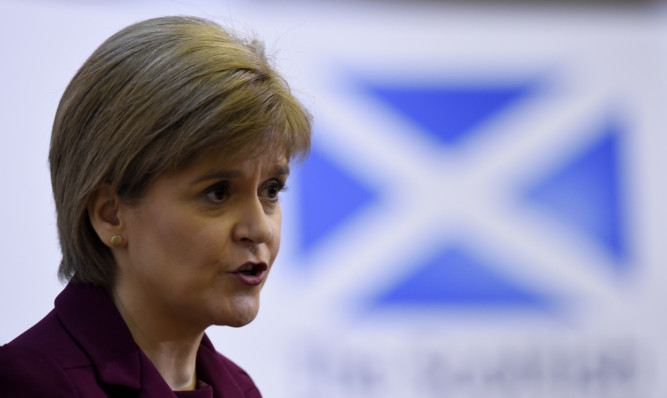Scotland’s First Minister has accused the Treasury of mounting a “pre-election partisan attack” on the SNP after Chief Secretary Danny Alexander used official figures to claim that the party’s anti-austerity platform would harm the economic recovery.
In a letter to the head of the UK civil service, Sir Jeremy Heywood, Nicola Sturgeon said research published showed the Treasury to be “transparently party political”.
Mr Alexander said the analysis showed that Ms Sturgeon’s call for an extra £180 billion of public spending to ease the impact of austerity would increase UK debt.
The SNP leader made the call in a speech in London last month in which she said a Labour government would have to abandon austerity policies to win her party’s backing at Westminster.
In the letter to Sir Jeremy, Ms Sturgeon also renewed her criticism of Prime Minister David Cameron for rejecting an SNP request for pre-election talks with civil service chiefs.
The First Minister said: “We refute the Treasury document, and indeed regard it as an own goal by underlining the damaging, wrong-headed and unfair austerity economics that the Westminster-based political parties stand for.
“Putting to one side the fact that the alternative to the austerity plan I have outlined was done in my capacity as First Minister rather than SNP leader, it is clearly the case that the UK Government is including the SNP in political attacks prepared at taxpayers’ expense – while continuing to exclude us from pre-election access to the civil service.
“This inconsistency reeks of hypocrisy, as well as a Treasury which has become transparently party political.”
She reminded Sir Jeremy of a previous comment he had made that the civil service must be aware of minority party policies in light of potential post-election discussions.
Ms Sturgeon added: “However, it would appear that the Treasury is maintaining such an awareness in order to mount pre-election partisan attacks on the SNP, presumably at the behest of ministers, their special advisers and with the full involvement of the Treasury Permanent Security, while the Prime Minister rejects the pre-election access I requested.”
Responding to the letter, a source close to Mr Alexander said: “Undertaking costing of opposition party’s proposals is a normal part of HMT business.
“Such costing exercises are undertaken under strict guidelines to ensure impartiality.
“It is striking that nowhere in the letter does the SNP question the analysis itself.
“This is yet another example of them trying to divert attention away from the main issue at hand – namely, their lack of judgment on the big economic issues and how that will put the economic recovery both in Scotland and across the UK at risk.”
A Government spokeswoman said: “There is nothing new in the Government producing costings of proposals put forward by political parties.
“In fact, successive administrations have accepted that since departments provide factual answers to MPs and peers about the costs of identifiable changes in activities or benefits, there is no objection to officials providing ministers with similarly factual information about clearly identified alternative policies.
“Costings are produced by officials in accordance with a clear and established process.”
A spokesman for Finance Secretary John Swinney said Mr Alexander had made a”major blunder”.
He said: “The Scottish Government’s proposals would see public spending increase by 0.5%, generating £180 billion of investment in public services in contrast to the Westminster parties’ cuts.
“That is money which can and will support our NHS, our education system and boost the economy.
“Danny Alexander’s own analysis confirms that, under our proposals, the deficit would fall every year, and on debt, where Scottish Government analysis shows debt as a percentage of GDP falling every year, even using the Treasury’s own figures, debt will fall steadily from 2017-18 onwards under the SNP plan.
“There is now a clear choice at this election. The SNP offer the only alternative to the cuts planned by all the Westminster parties.
“Labour, the Tories and the Lib Dems all want to cut more and more from critical public services, despite these Treasury figures showing there is an alternative.”
